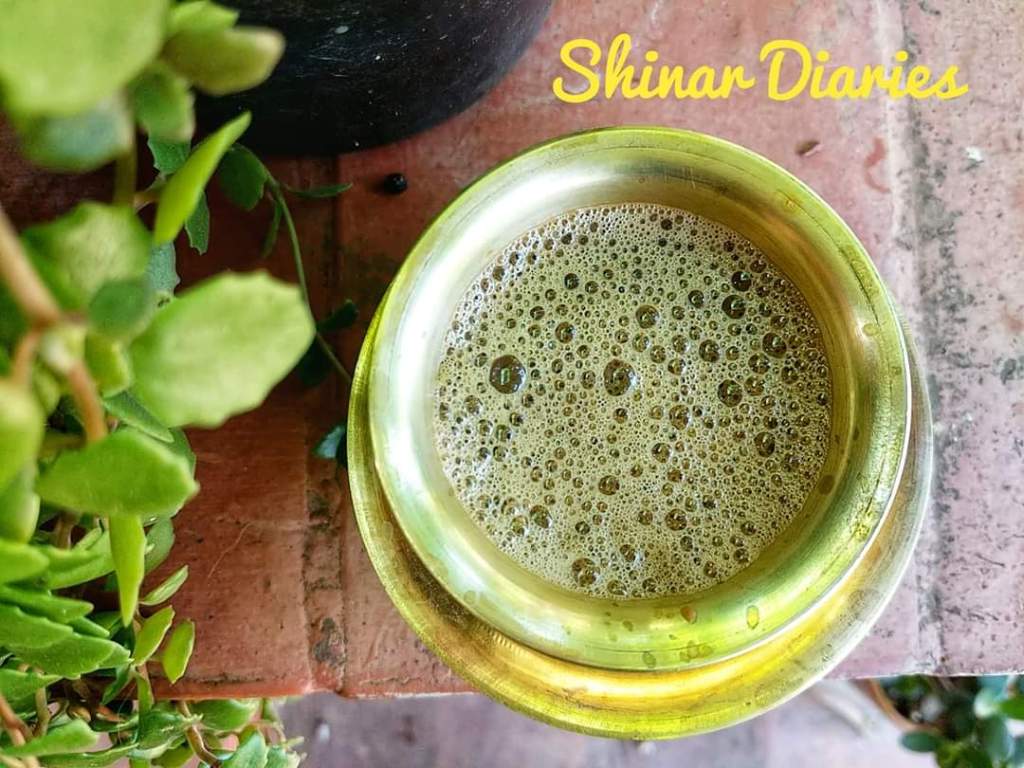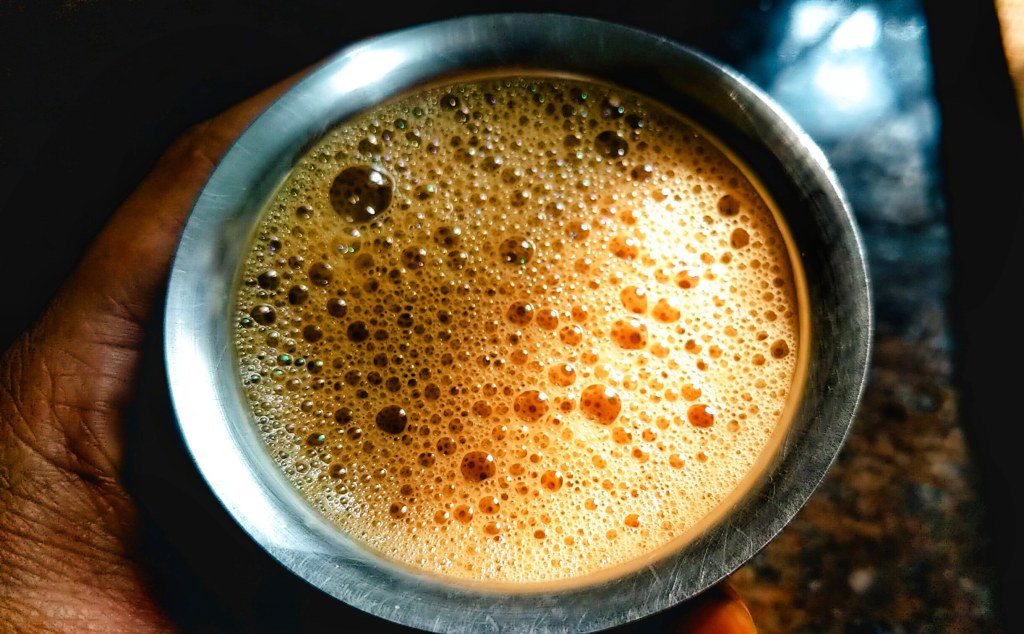
‘Have a quarter cup’ was a constant at home as I grew up. Filter coffee was made fresh at home just as frequently as in the road side cafes!
A full cup of coffee was had only twice a day: early morning and evening. The rest of the day was peppered with these quarter cups…just enough for a couple of sips.
At home, early morning sees a quarter cup accompanying me through house cleaning, dog feeding, puppy cleaning and whatever else! So it’s the second quarter, post breakfast, that I enjoy.
Watching the birds, bees & butterflies flit about their morning routines starting each day afresh.
The dogs sunning themselves while lazily keeping an eye on the squirrels pushing me to slow down and enjoy the sunshine.
Dry leaves floating down gently teaching me the fine art of letting go gracefully.
The peek of new leaves on the trees giving me lessons in growth and hope.
It’s only a quarter cup of coffee and a few minutes that work their magic for the day.:
A little history of coffee in India
It is said that coffee came to India through a Sufi saint, Baba Budan in the 17th century. He smuggled coffee beans to Chikmagalur in Karnataka and ever since, coffee cultivation has become an integral part of their economy. There is a hill range named after the saint and is a popular tourist spot.
The primary coffee growing states in South India are Karnataka (with the majority production), Tamil Nadu, Andhra Pradesh and Kerala. India’s coffee is grown in the shade and is supposed to be one of the best flavours.
One can buy pure coffee powder or buy a blend with chicory. Chicory is a flowering plant and the root is roasted & ground for use with coffee beans. It has a similar taste to the coffee beans and started being added to counter the escalating price of coffee beans. It continues to be available at blends ranging from 10% to 50% chicory. It adds body and aroma to the drink.
Pure coffee made in the traditional filter, in my opinion, is the best in flavour. However, a 80/20 mix works for me as well, stretching the coffee supply a little longer since it yields a stronger decoction.
How to make the perfect filter coffee
The first and foremost is the coffee powder itself. Pure coffee yields a light decoction, but has a beautiful flavour. It is also lovely if one wants to have a black coffee.
One can also buy a blend with chicory; I suggest to keep it mild (between 5-20%) as a heavier blend tends to be more bitter and leave a terrible aftertaste. A mild addition of chicory is said to extract more flavour from the coffee beans.
It is believed that the blending of chicory in coffee came about in the early 17th century. A shortage of coffee leading to the French and Germans blending chicory and the influence spread in India through the French colonies here.
The chicory plant belongs to the dandelion family and the root is what is added to coffee. Other reasons for addition of chicory are said to be it’s medicinal value and to reduce the intake of caffeine.
I usually buy an 80-20 mix from the Coffee Day brand which has been consistent in quality and proportion of blend. I always keep a stock of pure coffee as well. We also get some estate fresh coffee powder from Chikmagalur or from Panduranga Coffee Works there (they deliver across several cities). Another option is a mix of Cothas (80-15 ratio) and Coorg coffee powders that also works quite well. Fresh Mills also has some lovely mixes from a mix of Arabica & Robusta to mixes with chicory and to pure single bean powders. The powders are best stored in glass or steel airtight jars.
The second is the filter. One can either use a brass or steel filter. I also have a percolator that I simply love!
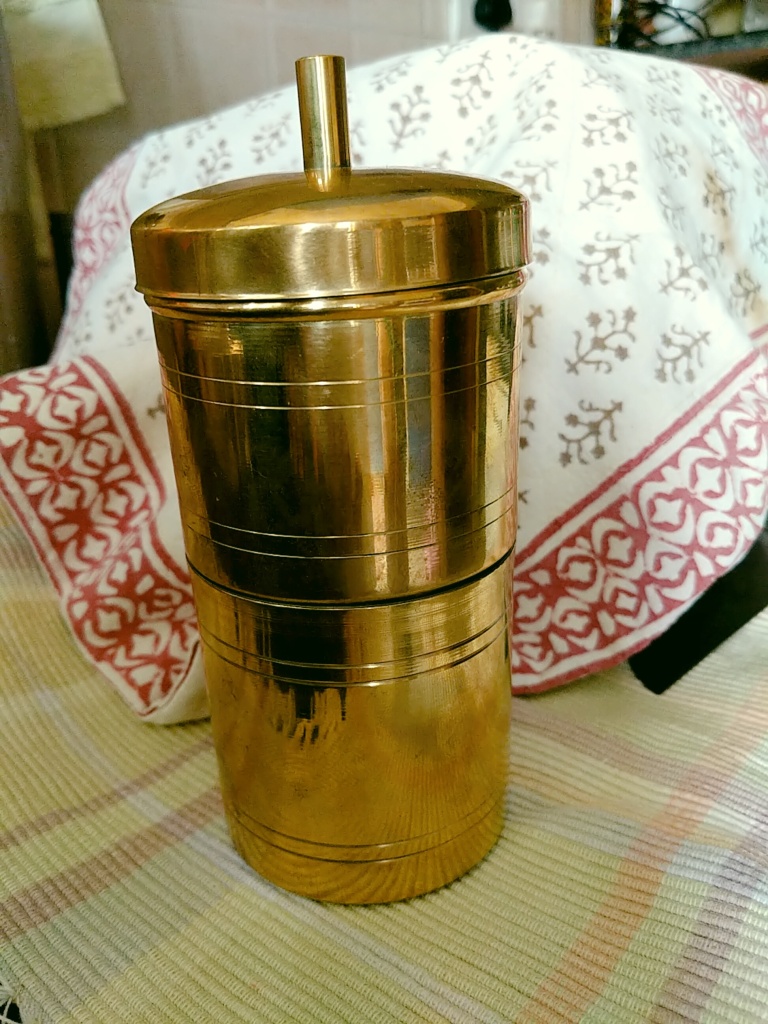
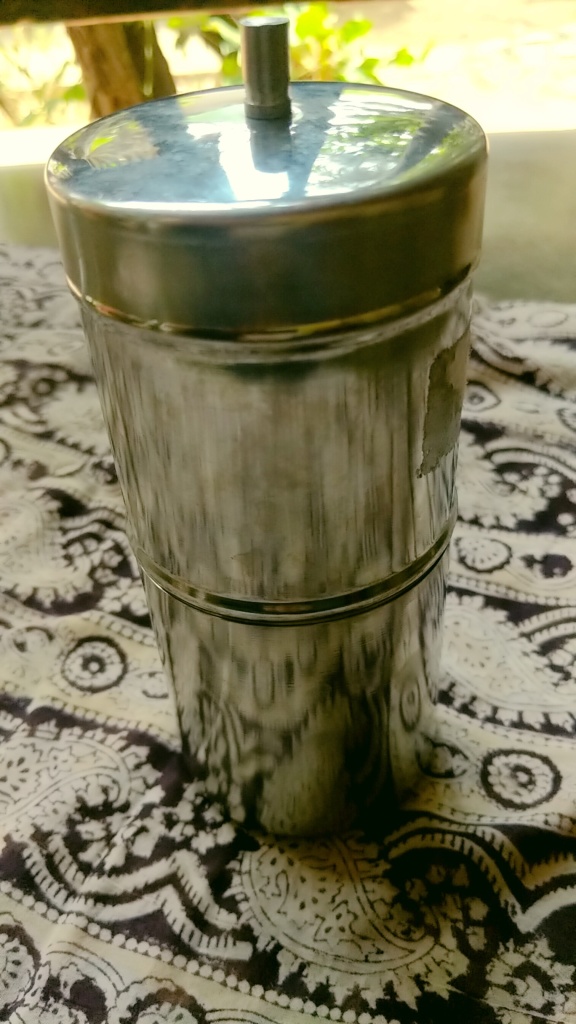
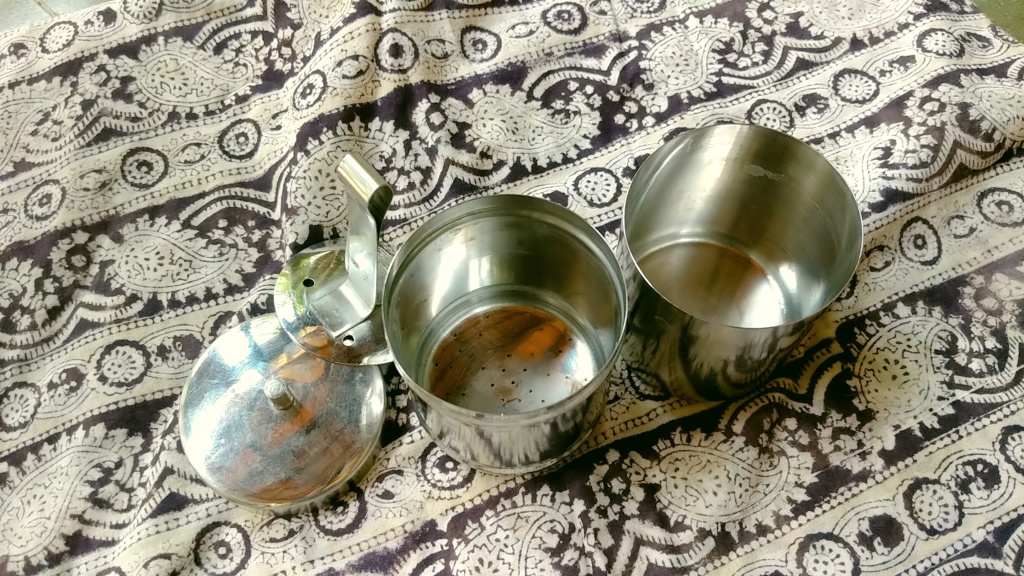
The drip method uses the above filter. It has two cylindrical cups, the base (in which the decoction collects), the one with a pierced bottom that sits on the base tumbler (the coffee powder is added in this), the little pierced plate with a stem that sits on the coffee powder and over which the hot water is poured and a lid.
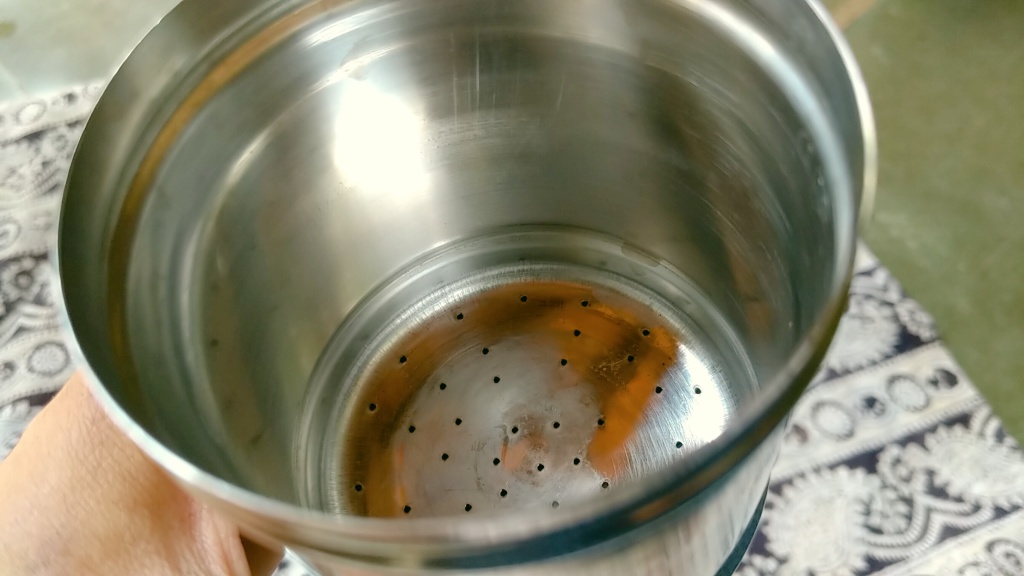
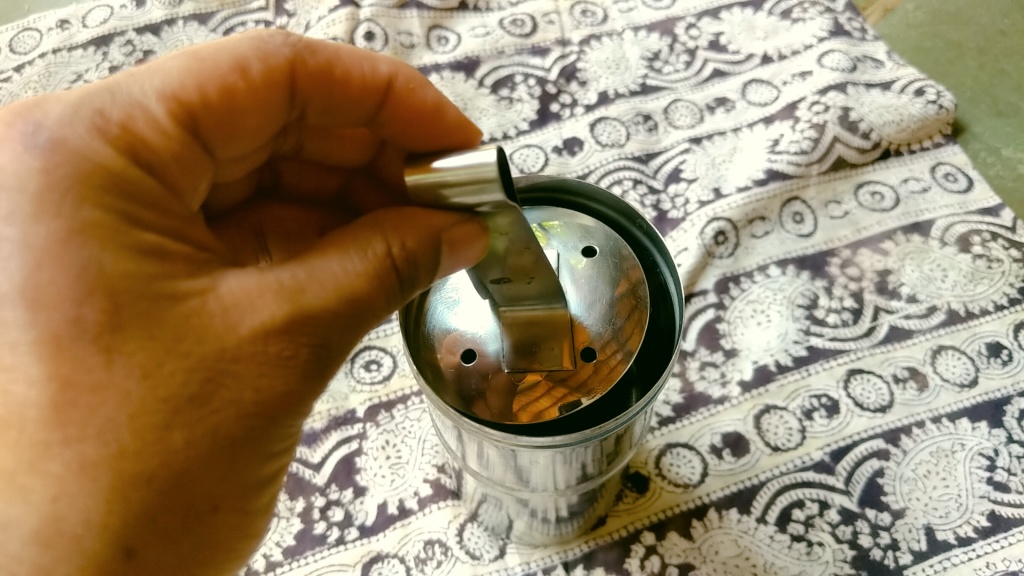
The percolator works by using the steam to push the decoction up. The water is at the base, the pierced middle holds the coffee powder and lastly, the top that holds the decoction. Water is filled in the bottom cup upto the little nozzle, coffee powder is filled into the pierced middle section and gently flattened with the back of the spoon, the top is rotated into place and placed on the stove.
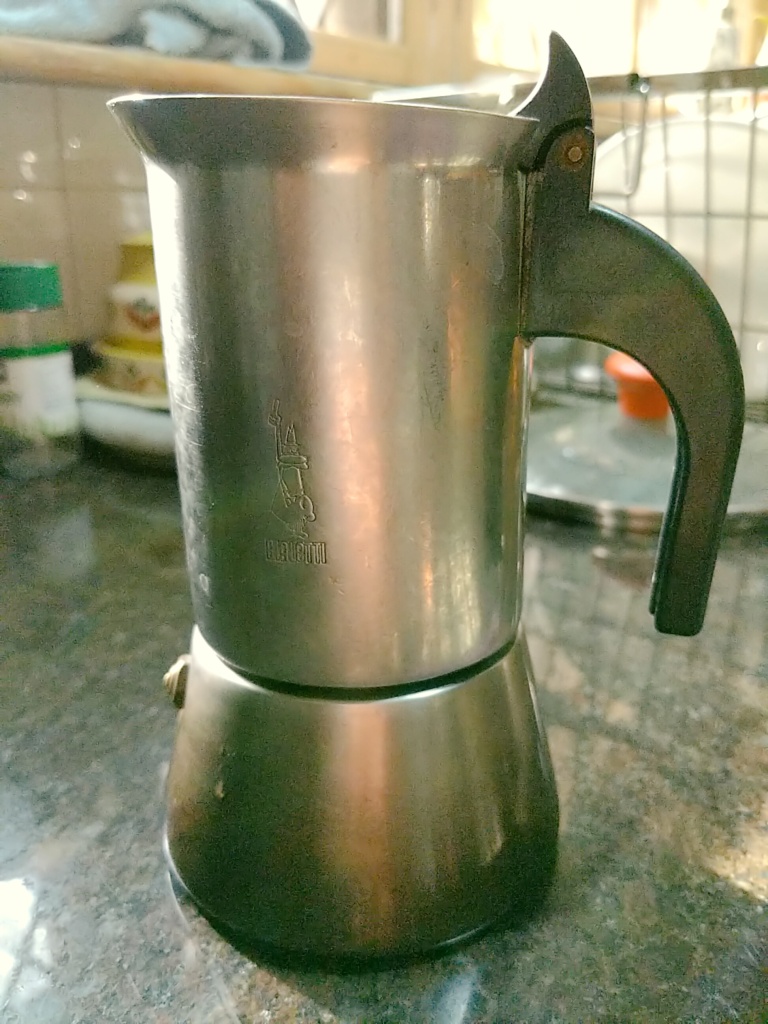
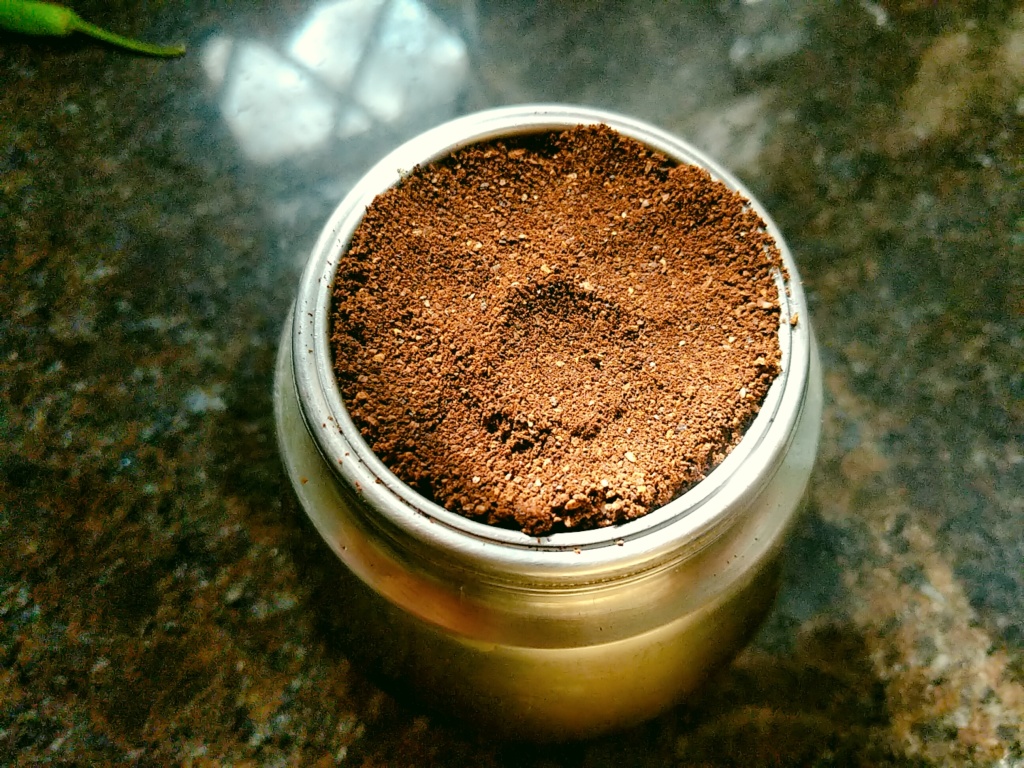
The third is the actual making of the classic filter coffee. Heat milk in a bowl on the stove. Use a glass and pour the milk between the glass and bowl to whip up the froth. You can do this 3-4 times.
When the milk is hot, add the decoction. The amount of decoction you add depends on how strong you want your coffee. Add sugar if you prefer. Mix once or twice using the glass (similar method as above) to combine the additions well. Mixing too many times at this stage will cool down the coffee, so do avoid.
Pour into a glass or cup and serve hot! To get the frothy top, simply pour from a slight height.
